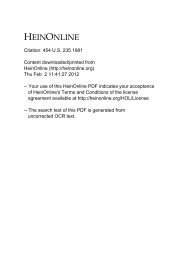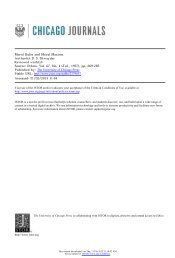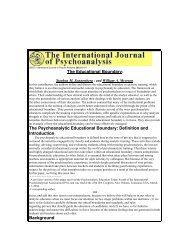Coagulation Factors in Controlling Traumatic Bleeds: FFP, PCC, or ...
Coagulation Factors in Controlling Traumatic Bleeds: FFP, PCC, or ...
Coagulation Factors in Controlling Traumatic Bleeds: FFP, PCC, or ...
You also want an ePaper? Increase the reach of your titles
YUMPU automatically turns print PDFs into web optimized ePapers that Google loves.
i. Several circulat<strong>in</strong>g prote<strong>in</strong>s <strong>in</strong>teract <strong>in</strong> a cascad<strong>in</strong>g series of limited proteolytic reactions<br />
ii. Tissue fact<strong>or</strong> (TF)<br />
1. Transmembrane prote<strong>in</strong> expressed outside the vasculature<br />
2. B<strong>in</strong>ds FVIIa when exposed on damaged endothelium <strong>or</strong> to blood that has extravasated tissue<br />
3. TF-FVIIa complex: ma<strong>in</strong> <strong>in</strong>itiat<strong>or</strong> of blood coagulation – activates FIX and FX<br />
i. Tissue fact<strong>or</strong> pathway <strong>in</strong>hibit<strong>or</strong> (TFPI): <strong>in</strong>hibits catalytic action of TF-FVIIa complex<br />
4. FXa and FVa f<strong>or</strong>m prothromb<strong>in</strong>ase complex on activated cell surfaces<br />
catalyze conversion of prothromb<strong>in</strong> (FII) to thromb<strong>in</strong> (FIIa)<br />
iii. Thromb<strong>in</strong> (FIIa) functions<br />
1. Allows fibr<strong>in</strong>ogen to polymerize and f<strong>or</strong>m a fibr<strong>in</strong> clot, an essential component of a functional<br />
clot<br />
2. Activates upstream clott<strong>in</strong>g fact<strong>or</strong>s (V, VIII, IX)<br />
3. Potent platelet activat<strong>or</strong> and mitogen<br />
4. Activates prote<strong>in</strong> C pathway, lessen<strong>in</strong>g the clott<strong>in</strong>g response<br />
b. Endothelial cell layer 5,6<br />
i. Sett<strong>in</strong>g of vascular <strong>in</strong>jury<br />
1. Series of changes, result<strong>in</strong>g <strong>in</strong> a m<strong>or</strong>e procoagulant phenotype<br />
2. Amplification phase:<br />
Vessel damage extravascular migration of platelets and FVIII-von Willebrand complex<br />
platelet adherence and activation, secretion and synthesis of vasoconstrict<strong>or</strong>s and platelet<br />
recruit<strong>in</strong>g and –activat<strong>in</strong>g molecules<br />
3. Propagation phase:<br />
Large numbers of activated platelets <strong>in</strong>creased rates of thromb<strong>in</strong> generation with<br />
subsequent fibr<strong>in</strong> generation f<strong>or</strong>mation of platelet plug<br />
c. Hemostasis 4<br />
i. Def<strong>in</strong>ition: a complex process that limits blood loss follow<strong>in</strong>g vascular <strong>in</strong>jury<br />
1. Ma<strong>in</strong>ta<strong>in</strong>s blood fluidity<br />
2. Repairs vascular <strong>in</strong>jury<br />
3. Prevents vessel occlusion (thrombosis) and <strong>in</strong>adequate perfusion of vital <strong>or</strong>gans<br />
ii. Both excessive bleed<strong>in</strong>g and thrombosis represent a breakdown of the hemostatic mechanism<br />
d. Dissem<strong>in</strong>ated <strong>in</strong>travascular coagulation (DIC) 1,5<br />
i. <strong>Coagulation</strong> and fibr<strong>in</strong>olytics systems pathologically activated<br />
ii. Hemostatic system “careens out of control”<br />
iii. Leads to generalized <strong>in</strong>travascular clott<strong>in</strong>g and bleed<strong>in</strong>g<br />
iv. May follow massive tissue <strong>in</strong>jury<br />
v. Often fatal when underly<strong>in</strong>g disease process not controlled<br />
R. Sohraby 3

















